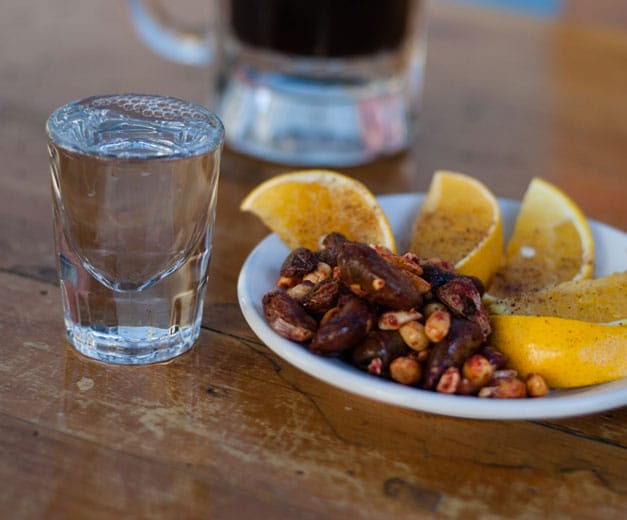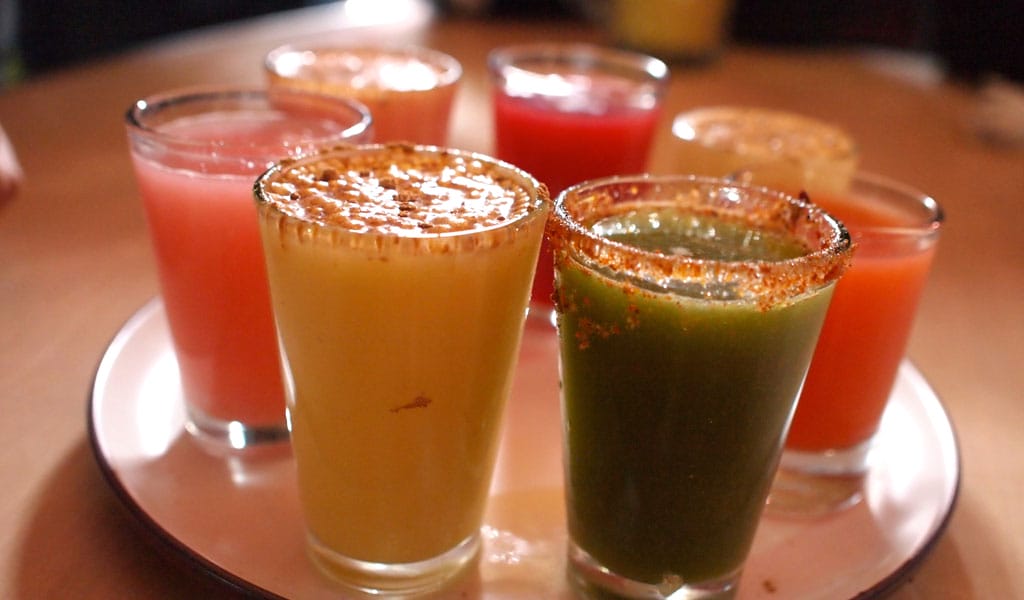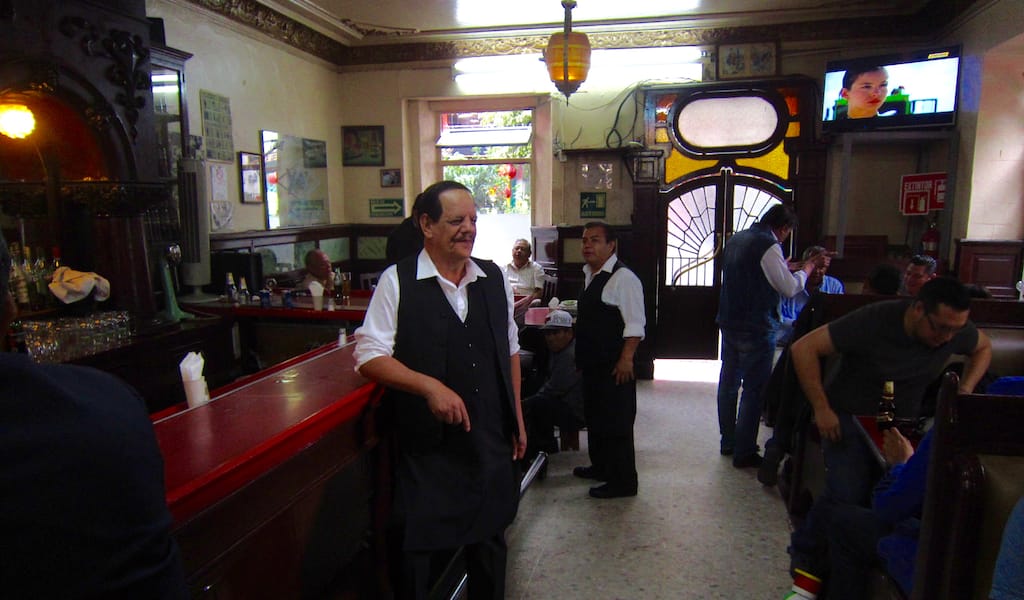Editor’s note: For our last stop on CB’s Global Bar Crawl this week, we’re pulling up a stool at our favorite mezcal bars in Mexico City, kicking back and savoring every last drop.
Para todo mal, mezcal. Para todo bien, también. Y si no tiene remedio, tómate litro y medio.
For everything bad, mezcal. For everything good, the same. And if that doesn’t help, drink a liter and a half.
– Popular saying among mezcal lovers
A couple of years ago, La Logia de los Mezcólatras, a group of Mexico City mezcal enthusiasts, gave us one of our first mezcal tastings. Back then, our approach to the smoky drink was very cautious. We had heard talk of how strong it was, with comparisons to paint thinner to boot. But after a couple of hours with Gustavo, our mezcal counselor, we came out of that tasting with a completely different view of mezcal – and also rather tipsy.
We’re not the only ones who’ve fallen in love with this centuries-old drink. Mezcal, like tequila, is distilled from the fermented juice of the maguey, a kind of agave; the smokiness comes from the underground roasting of the succulent. Once regarded as a drink of the lower classes in Mexico, it has become hip in a city that is always in constant pursuit of the next trend. It’s more than just the latest thing for hipsters and college kids to latch onto, however. Groups like Los Mezcólatras and Mezcales Tradicionales are trying to teach people how to drink and enjoy real mezcal made by small producers.
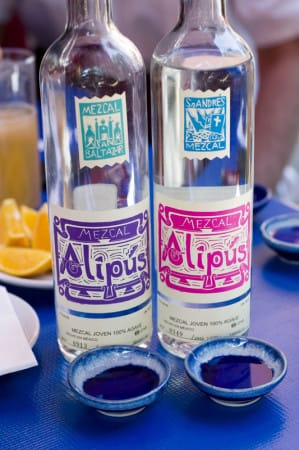 Mezcalerías have opened all over the city, with a remarkable variety of offerings, from industrially produced (considered an abomination by some of the more conservative connoisseurs) to unlabeled bottles brought directly from villages and rancherías all over Mexico. Some of the latter come from production batches as small as 50 liters and can run as high as $100 per bottle.
Mezcalerías have opened all over the city, with a remarkable variety of offerings, from industrially produced (considered an abomination by some of the more conservative connoisseurs) to unlabeled bottles brought directly from villages and rancherías all over Mexico. Some of the latter come from production batches as small as 50 liters and can run as high as $100 per bottle.
In our tasting Gustavo explained that tequila is not a drink that Los Mezcólatras endorses. “The demand for tequila became so high that the government now allows large corporations to use other sugars besides blue agave,” Gustavo explained. “They are also allowed to produce it outside of Tequila, Jalisco, against the Designation of Origin regulations.”
Not everybody who drinks mezcal feels as strongly about tequila as La Logia de los Mezcólatras, but that’s not to say that they don’t take their favorite drink seriously. Mezcalerías now list their mezcals by name, origin and alcohol content – good mezcals can’t be less than 45 percent ABV, according to Gustavo – and some also cite the name of el maestro mezcalero, the person in charge of production.
For Los Mezcólatras, drinking mezcal is more than a social event. There’s a ritual that must be observed before trying a new bottle. Mezcal is served into jícaras, small bowls made from the fruit of the calabash tree. “The bubbles that form on the top tell us the alcohol content, the distillation process and even the region of the country where it was produced,” Gustavo told us. Rubbing some mezcal on top of your hand allows you to smell the flowers, wood, campfire, citrus and other flavors you might find in the jícara.
“You don’t shoot mezcal,” Gustavo told us. Rather, the drink is slowly sipped and then swirled around the mouth, not unlike a fine wine. To cleanse your palate between sips, orange wedges are served with sal de gusano, de hormiga, de chapulín or volcánica (salts made from dehydrated worm, ant or grasshopper or naturally occurring from volcanic activity).
Mezcal cocktails are also, unsurprisingly, de rigeur. Eduardo Lucero, manager at Corazón de Maguey, told us that as a pioneering restaurant in the mixing arena, they needed to come up with new ideas if they wanted to stay relevant. We considered this as we sipped a chocolate mousse mezcal drink one of the bartenders was perfecting.
Here are some of our favorite places to drink mezcal – straight up or any number of other ways.
Corazón de Maguey
This upscale mezcalería in the heart of Coyoacán has one of the largest mezcal selections in the city. All of their mixed drinks aim to highlight and not obscure the star attraction. Appetizers, main dishes and desserts are also great here.
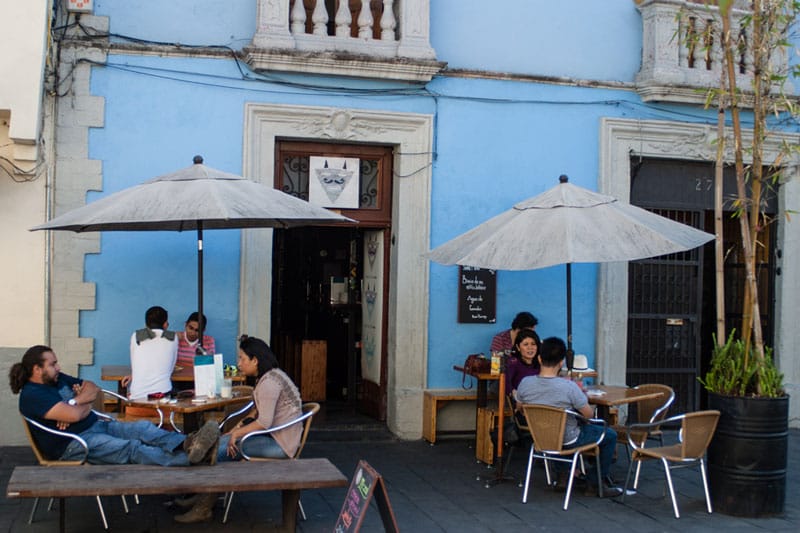
Mexicano
La Logia de los Mezcólatras holds its monthly gatherings here. The mezcal selection is constantly in flux according to availability. However, you can always find these types: minero, or double-distilled; de pechuga, a smoother variety that has become very popular; and sotol, a mezcal cousin from the northern states of Mexico. The mixed drinks here are made with mezcal, pulque and exotic fruits, of which xoconostle (a sour cactus fruit) is our favorite.
La Botica
La Botica only offers artisanal mezcals and sotols on their menu. They’re commited to supporting only small producers from marginalized parts of the country. Their raspados are made with shaved iced, mezcal and fruit such as mango, guava and guanábana (soursop).
Maruka
Maruka is the bar inside the Hotel Maria Condesa in the hip neighborhood of Condesa. Here you can find all kinds of drinks derived from the maguey, such as tequilas, sotols and mezcals. We love the mezcal chocolate martini.
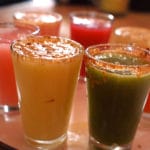 April 7, 2017 Pulque
April 7, 2017 Pulque
Milky, tart, viscous and slightly foamy. At first glance and sip, there’s little to […] Posted in Mexico City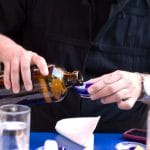 May 17, 2013 Corazón de Maguey
May 17, 2013 Corazón de Maguey
The sap of the spiky maguey plant has long been used by the indigenous peoples of Mexico […] Posted in Mexico City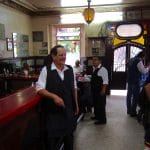 March 23, 2019 Behind Bars
March 23, 2019 Behind Bars
For every level of society inside and outside Mexico, cantinas serve as both toxin and […] Posted in Mexico City
Published on February 21, 2014
Related stories
Sample the city's best pulque on our culinary walk.
April 7, 2017
Mexico CityMilky, tart, viscous and slightly foamy. At first glance and sip, there’s little to explain why pulque – a mildly alcoholic drink made by fermenting the fresh sap of certain types of maguey, the same plant used for making mezcal – has remained a trusted companion to Mexican drinkers since Aztec times. Pulque, actually, has…
May 17, 2013
Mexico City | By Ben Herrera
Mexico CityThe sap of the spiky maguey plant has long been used by the indigenous peoples of Mexico to prepare pulque, a milk-colored, viscous drink that has roughly the same alcohol content as beer. When they arrived in Mexico, the Spanish were introduced to pulque. Used to imbibing harder stuff, however, the conquistadors experimented with distilling…
March 23, 2019
Mexico CityFor every level of society inside and outside Mexico, cantinas serve as both toxin and tonic for drink, song, jocularity, wit, mayhem and mishap. Tio Pepe, now thought to be the oldest such bar in the old Aztec capital, has provided both in equal measure since way before it received its present name in 1878.…







































